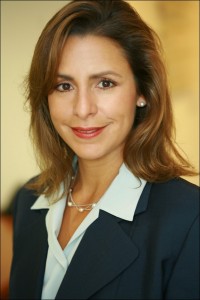| In the near term, funds of funds face some of the same ongoing challenges that have plagued them over the past several years – fee-conscious institutional investors making direct investments as well as narrowing margins due to growing infrastructural and due diligence needs.
With that said, however, some positive signs are appearing on the horizon for funds of funds. Outperform hedge funds One interesting development in 2015 was that funds of
funds outperformed single hedge funds on an asset-weighted basis for the second consecutive year. The HFRI Funds of Funds Composite Index dipped 0.36% in 2015, outperforming the HFRI Weighted Composite Index which fell 0.85%.
In 2014, the fund of funds composite index gained 3.37%, exceeding the hedge fund composite index’s 2.98%. Increased RFPs, new launches Funds of funds are seen as a good solution to some clients. Fund of funds searches and hires strengthened in 2015 as institutions continued to move to separately managed accounts and customized portfolios at the expense of commingled funds of funds. Funds of funds continue to redefine their role. “In the early days, third party marketers were coming up with new ways to develop product. Funds of funds then started to take on more of an advisor role rather than a product development role. Now, funds of funds go to the client and develop a product around his needs – i.e. the OCIO route. Funds of funds have become more sensitive to client needs. They do more than select managers. They do more risk analysis, oversight and daily monitoring,” observes Larry Chiarello at BPV Capital Management. Some institutions are starting to realize they need a very good consultant or alternatives specialist to do manager selection. In alternatives, manager selection is very important, adds Chiarello.As performance dispersion widens, this functions becomes even more critical.
“A significant amount of private wealth exists in the $1-$20 million investable asset range where the only way to get proper diversification in alternatives is through some form of commingled vehicle,” says Erika Cramer, partner at Silver Lane Advisors. “Unless the investor is a $150 million family office or an “instividual,” the typical high net worth individual client does not get proper alternative strategy exposure through direct hedge fund investing. This diversification demand generates a continued need for hedge fund of funds and commingled products.“ Ron Geffner, partner at Sadis & Goldberg, says he is seeing more niche-oriented funds of funds being launched e.g. an alternative finance fund of funds, a sector-focused fund of funds, and an emerging manager fund of funds. All have low correlation to the market. Game changer Some point to the Legg Mason transaction with EnTrust as a game-changer. In mid-January 2016, Legg Mason announced it was acquiring New York-based EnTrust Capital which would be merged with Permal Group, its existing fund of funds. The merger creates a powerful organization. The merged group, EnTrustPermal, will have about $29 billion in assets, making it the fifth largest fund of funds. “Legg Mason has invested a lot of time scouring the market place to find complimentary platforms that are additive in terms of talent, strategy exposure, investor mix and geographic focus. As a buyer, they are successful differentiating themselves as a strategic partner and not simply solving a founder’s need for liquidity. Each of their transactions has been additive such as Fauchier increasing geographic exposure and providing for additional talent, not just scale,” adds Cramer. “The transaction makes Legg Mason a strong one-stop shop for both traditional and alternative investments. They now have diversity of solutions to meet institutional and private client demands, bolstering their institutional credibility. Additionally, as a publicly traded firm, they have a strong capital base to support their growth initiatives,” says Cramer. It is possible that other large asset managers will follow suit, rolling up multiple complimentary funds of funds to create powerful strategic organizations.
Excerpt from the just-release white paper: Outlook for 2016: Themes and Trends |

